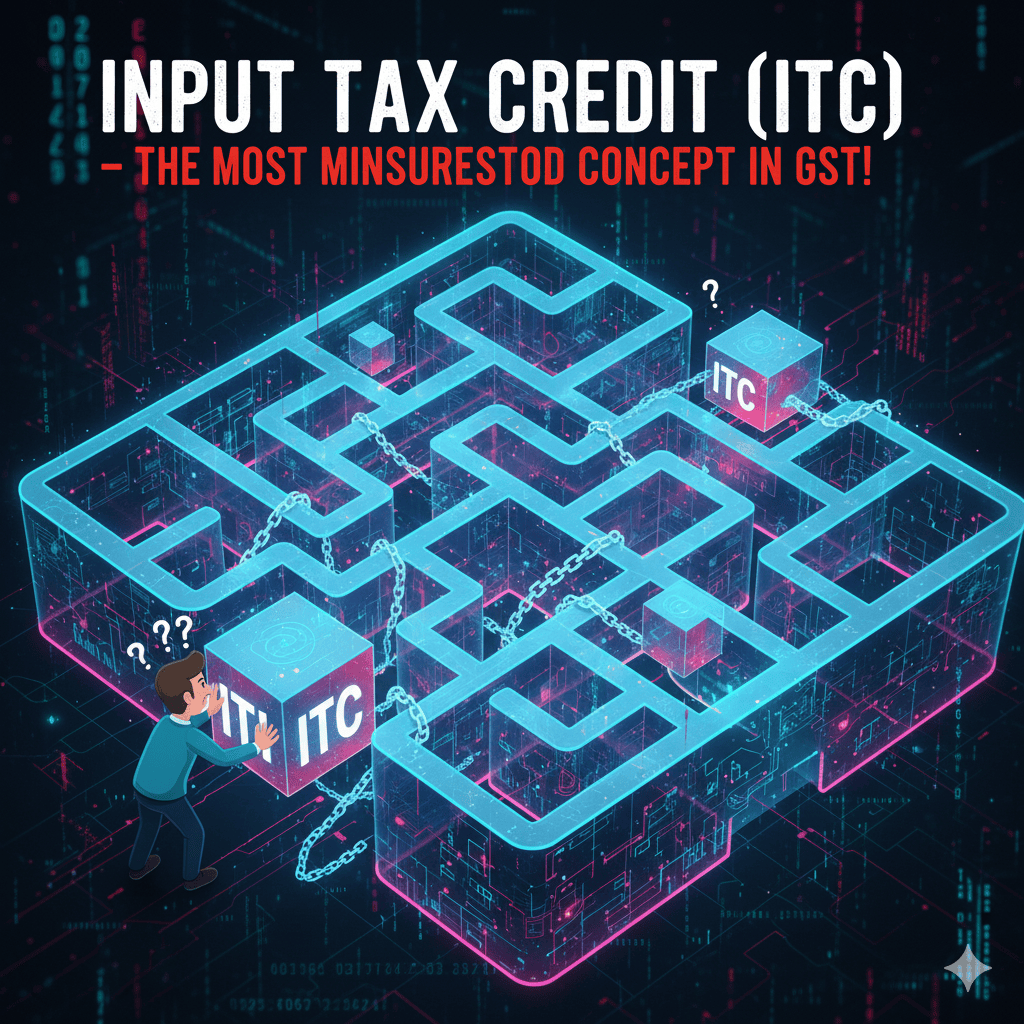
🧾 1️⃣ What Is Input Tax Credit (ITC)?
When your business buys goods or services and pays GST on them, you can claim credit for that GST amount and adjust it against your output tax liability.
💡 Simple Example:
You buy goods worth ₹1,00,000 + ₹18,000 GST → You sell goods worth ₹1,50,000 + ₹27,000 GST
Then you can adjust ₹18,000 ITC → Pay only ₹9,000 to the government (₹27,000 - ₹18,000).
That’s ITC — your rightful tax benefit to avoid double taxation!
📋 2️⃣ Conditions to Claim ITC
To legally claim ITC, make sure these 5 golden rules are followed 👇
✅ You have a valid tax invoice from a registered supplier
✅ You’ve received the goods/services
✅ Your supplier has filed GSTR-1 and it reflects in your GSTR-2B
✅ You’ve paid the supplier within 180 days
✅ You’ve filed your GSTR-3B return
Miss any of these, and your ITC may be disallowed or reversed later.
⚠️ 3️⃣ Common Mistakes Businesses Make
🚫 Claiming ITC on invoices not reflecting in GSTR-2B
🚫 Claiming ITC on personal or exempted expenses
🚫 Missing ITC on small vendor invoices due to poor bookkeeping
🚫 Not reconciling GSTR-2B and purchase register regularly
A small mistake here can lead to penalties, notices, or ITC reversal with interest!
💡 4️⃣ Items on Which ITC Is Not Allowed (Blocked Credits)
As per Section 17(5) of the GST Act, you cannot claim ITC on:
Motor cars (except used for transport business)
Food, beverages, club expenses
Gifts given to employees
Personal use items
Works contract services for construction
These are called “blocked credits.”
🧮 5️⃣ Pro Tip – Monthly ITC Review
✔️ Reconcile GSTR-2B with your purchase register every month
✔️ Track missing invoices early
✔️ Communicate with suppliers who haven’t filed returns
✔️ Keep proof of payment & receipt of goods
Doing this helps you avoid surprise reversals later during GST audit or annual return filing.
✅ 6️⃣ Key Takeaway
Input Tax Credit is not just a benefit — it’s a compliance responsibility.
Claim it smartly, match it monthly, and maintain proper records.
Stay compliant, stay profitable! 💼✨

